We know the fierce competition in the ecommerce industry compels you to compete on price. But some shoppers don’t search for cheap prices. Instead, they look for exclusiveness. Premium pricing (prestige pricing) is the perfect fit for ecommerce vendors who’d like to establish a high-end company with a stellar brand identity.
What is premium/prestige pricing?
A strategy where businesses price a product higher than the market average to strengthen perceived quality and establish a luxury brand image.
There are two scenarios in which prestige pricing works well:
- Either your brand has a premium feel to it. Meaning that your products are indeed high-quality and exclusive, and they deserve the money.
- Alternatively, you’re entering a market where there is a demand for your product but no current competitors. Customers are happy to pay more for products when no other options exist.
So, let’s take a deep dive into prestige pricing and establishing a luxury brand.

Premium pricing is all about luxury
You might be surprised to know that any product can be considered premium. Take this t-shirt, for example.
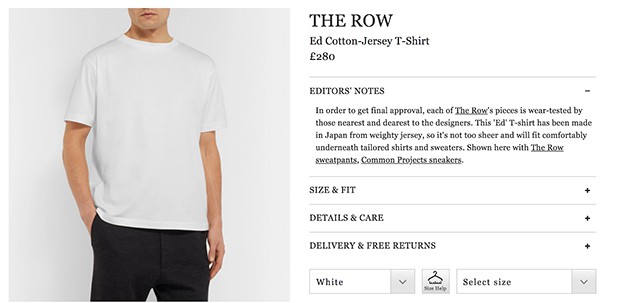
It costs £280.
Now compare it to this t-shirt which (from appearances only) seems very similar. This second t-shirt would only cost you £12.50.
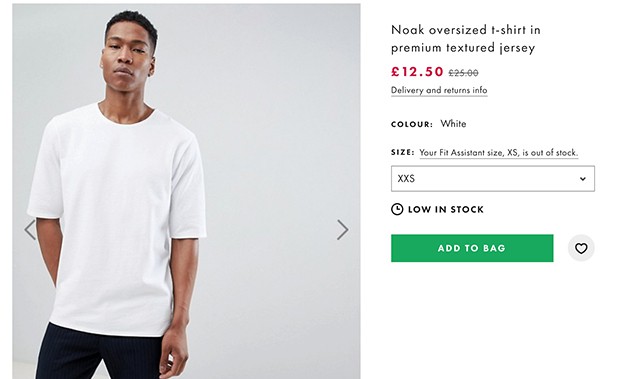
Would you pay for the first t-shirt? Maybe. Some people surely do. However, they wouldn’t if they knew it would rip within three months.
Luxury involves more than simply adding the word “luxurious” to your product descriptions. It needs to be high-quality and it needs to feel luxurious. But if your product is unique, perhaps you don’t need to market it as a premium one.
How unique is your product
When you’re the only seller of an item, it goes without saying that you can charge more. That’s why sellers on Etsy are able to charge more for their items.
Such as this one:
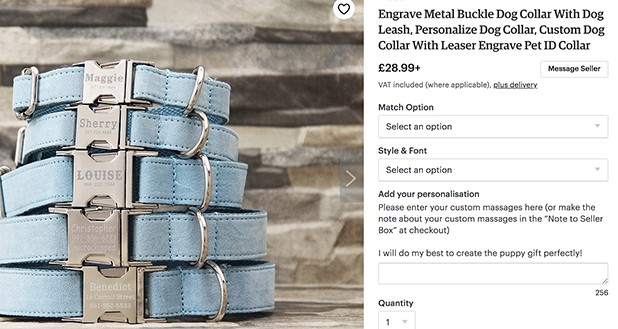
The product on Etsy is unique. If you purchase it, you’ll be one of the few that possess it.

Whereas when you buy this one, you’ll be the owner of an item loads of other people have as well.
However, design is not the single aspect of uniqueness. If your groundbreaking technology hasn’t been adopted by competitors, you can profit well with a premium pricing strategy.
Take Apple for example. Back then when the company monopolized the smartphone technology, iPhones were sold at premium prices and all the sellers ran out of stock within hours.

Today, Apple’s products don’t embody a unique technology or design, yet they still charge premium prices. Apple has a much smaller audience than it was when the iPhone was first released, but they are willing to pay more for this prestigious brand.
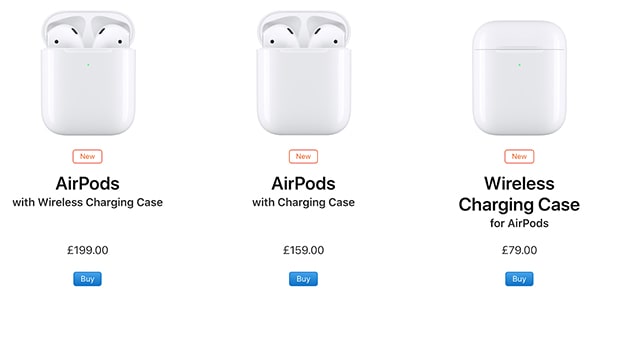
These Airpods look very similar to the ones below from Amazon but that doesn’t mean they can’t charge a premium. After all, Apple has adhered to the first strategy and ensured their products feel luxurious and priced based on their customer’s perceived value.
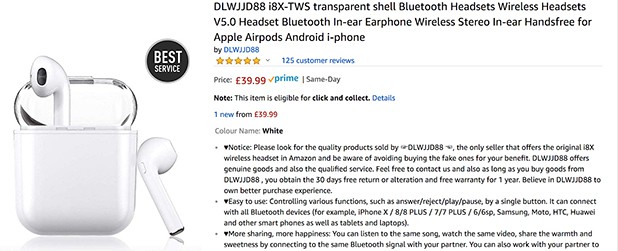
Advantages
- Needless to say, if you increase the sale price of a product, you’ll obtain higher profit margins. Even if fewer people can afford to buy iPhones than a Xiaomi phone, Apple’s smartphone profits are four times larger than its closest follower, Samsung. Meaning, you can make more profit with fewer people.
- Brand value and prestige price have a mutual relationship. While a high brand value allows a brand to implement prestige pricing, in turn, prestige prices improve a brand’s value.
Disadvantages
- Remember, as a prestige brand, you need to make it seem like your products are high quality and that means marketing your products in the same manner. Brands like Nike or Adidas will spend millions per year on marketing and advertising. The thing is though, it works.
How to tell a brand story when implementing premium pricing
Some key points when it comes to crafting your product or brand story:
- Explain what makes your product different. If you’re going to pay $4 for a bottle of water instead of $1, you want to know what makes the $4 water different.
- Show (don’t tell) your customers how they’ll feel when they own your product. Your customers need to feel your passion for your business and part of that involves showing (not telling) why your products are awesome.
- Be transparent. Transparency is key. If you source your materials ethically, talk about this. If you only hire local workers, talk about this. If you use your profits to give back to the community, talk about this. The more open you are with your business and process, the more open your customers will be with their money.
- Be consistent. This means your story should be told accurately across all mediums. Whether that be your product descriptions, blog posts, or social media. Customers and potential customers should feel your story wherever they are and whenever they decide to buy.
For example, TOMS has an entire section of its website dedicated to telling the story of how they give back as a brand.

Let’s wrap it up
But before you dive right into prestige pricing, make sure you’ve really considered whether your products or business warrants a higher price.
You need to let your customers know about your product and why it’s more expensive than the others.
Frequently Asked Questions
Fitbit is a well-known example of prestige pricing. The wearable tech company has many competitors that offer competitive prices. However, Fitbit positioned itself as a premium brand from the beginning, so it entered the market at above-average prices.
Apple smartphones, Rolex watches, Bentley cars, Versace designs, and so on. Merely possessing these products gives a sense of prestige to its owners.
1. It adds to the brand value since higher prices are perceived as an indicator of high quality.
2. Higher prices mean higher profit margins, which yield higher profits.
